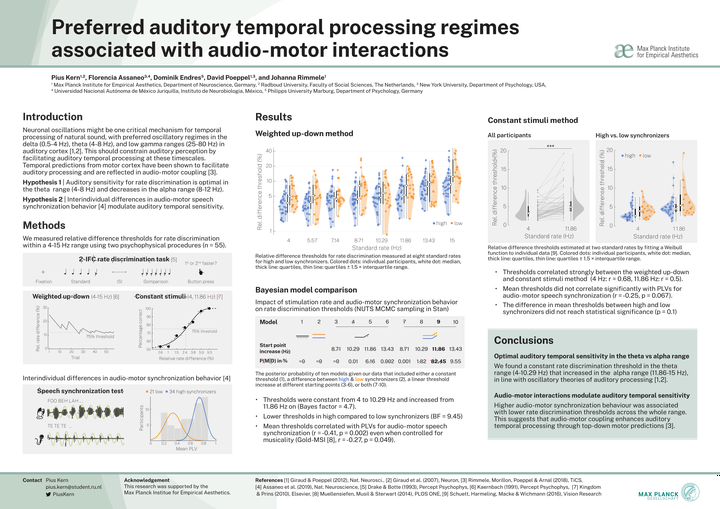Preferred auditory temporal processing regimes associated with audio-motor interactions

Abstract
Decoding the rich temporal dynamics of complex sound, such as speech or music, is constrained by the underlying neuronal processing mechanisms. Oscillatory theories suggest preferred processing regimes with a particular sensitivity for stimulation rates in the delta to theta range (<10 Hz) and a decline in the alpha range (10-14 Hz), but the evidence is ambiguous. Furthermore, it is unknown whether temporal predictions from the motor system can enhance the auditory temporal resolution or expand the optimal processing range to the alpha band. We measured the relative difference thresholds for rate discrimination of pure tone sequences across a range of stimulation rates (4–15 Hz) using two psychophysical procedures (n=55): an adaptive staircase method, and the method of constant stimuli to estimate the psychometric function at two stimulation rates. In a Bayesian model comparison, we tested the influence of (1) stimulation rate and (2) interindividual differences in audio-motor speech synchronization behavior, as accessed in a separate procedure, on the auditory temporal sensitivity. We found a constant optimal temporal resolution at rates from 4 to 10.29 Hz, while the rate discrimination ability decreased at higher rates. Crucially, the temporal resolution was improved for individuals with high audio-motor synchronization behavior, while no particular benefit at higher rates was observed. Our results provide evidence for an optimal auditory processing range at slower rates, indicative of preferred oscillatory regimes in the auditory cortex in the delta and theta range. Crucially, increased audio-motor coupling predispositions improved the auditory temporal resolution without expanding the optimal processing range.